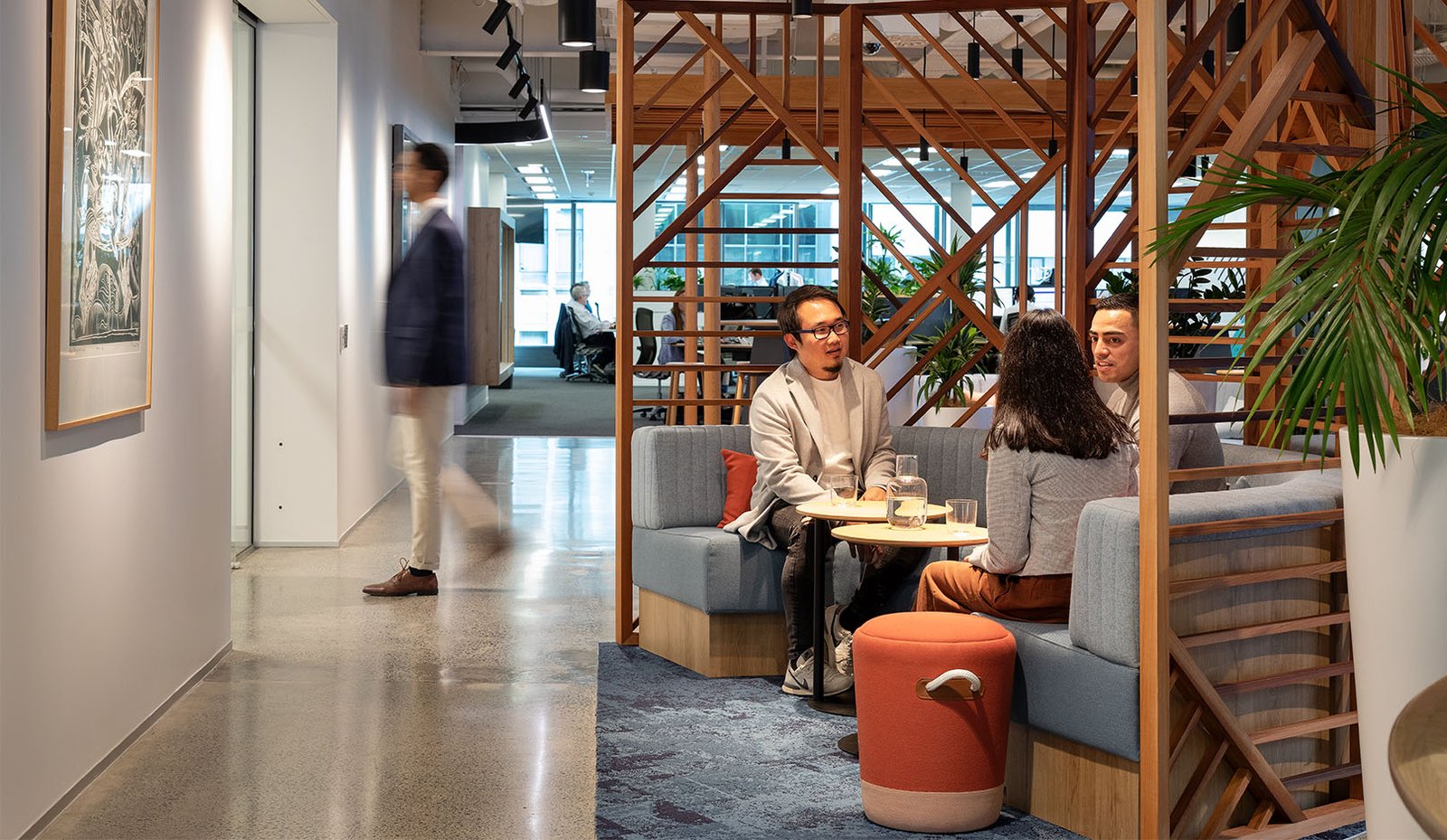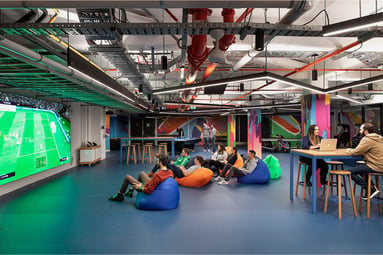How creating spaces for learning and mentorship can attract and retain talent

The return to the workplace has ushered in a unique set of challenges and opportunities for employees and employers alike. For many, this could mean emerging from a few years of hybrid working, which has impacted nearly every facet of our professional lives. And training, learning, and development are no exception.
In partnership with CoreNet Global, we surveyed over 100 companies to find out how they are onboarding new employees, and how hybrid work impacts learning and development today. While most companies have hybrid onboarding processes, our survey found that 1 in 4 respondents aren’t confident in welcoming new starters remotely. How can companies create a workplace culture where training, learning, and development are effective and valuable for everyone? This article explores three ways companies can create office space that enhances learning and mentorship to encourage people back to the office.
Spaces that create a sense of belonging
Respondents highlighted the top three biggest people challenges their company faced in the past year; the most common response was lack of talent for key positions (43%), followed by colleague engagement and retention (34%), and then feeling socially disconnected from colleagues (33%).
So, what can companies do to attract and retain talent? The answer lies in connection and belonging. By creating spaces that enable employees to make connections, new and existing employees feel more aligned with the business and brand and build stronger relationships with their co-workers. Providing employees with spaces where they feel seen, heard, and supported can go a long way to boost morale and help staff feel part of the organization and its mission.
Spaces that build connections and motivate your people
Strong interpersonal connections are critical for both new hires and current staff. While most survey respondents (86%) noted that they have a hybrid onboarding process, many respondents (77%) also said that they found onboarding easier or much easier in the office.
In-person onboarding and training can bring a sense of community back into the workplace, enhancing the bond between existing employees and getting to know new ones. Offices with informal and formal learning and development spaces can build and strengthen new and existing employee connections to the organization.
Spaces for formal and informal mentorship
Nearly half of our respondents (47%) noted that their company’s mentorship program is hybrid, but mostly virtual. However, respondents felt more confident mentoring team members from the office (90%) versus mentoring team members from home (43%). Separate research we conducted found that 72% of workers said access to training and development programs would encourage them back to the office.
Companies can create a culture of collaboration, development, and innovation by incorporating spaces that enable formal and informal mentorship opportunities. Designated areas where employees can develop new skills, gain insights from their colleagues, and have access to invaluable “eavesdropping” will not only help new hires grow, but can also give mentors and tenured employees opportunities to refine their skills, stay current on the latest trends, and build mutually beneficial relationships.
A workplace that enables learning and development will create a more engaged, productive – and committed – workforce.
Interested in learning more? Download insights from our CoreNet + Unispace survey.


